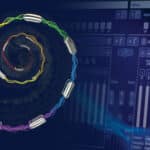Published May 13, 2024
An Interview with Darla Franz: Enhancing Natural Hearing with MED-EL Cochlear Implants
Discover how MED-EL's focus on preserving delicate cochlear structures, precise stimulation delivery, and innovative pulse technology sets the stage for a truly natural sound experience. We will explore the intriguing dynamics between electrode design and sound quality, offering a glimpse into the future of cochlear implant technology.

You have heard from us that electrode length plays a crucial role in producing natural hearing. We interviewed Darla Franz, the Vice President of Education, Learning, and Strategy, to discuss the dynamics at work between electrode design and sound quality.
Question (Q): What’s unique about MED-EL’s hearing implants that allows them to achieve the closest to natural hearing?
Darla Franz (DF): Most readers have heard recipients say that a cochlear implant (CI) sounds like a cartoon character. Over time, recipients say that they get used to the sound quality from the implant, but new research is telling us that particularly with shorter electrode array lengths, the perceived pitch of sounds does not significantly lower even after years of experience.Dorman, M. F., Natale, S. C., Noble, J. H., & Zeitler, D. M. (2022). Upward Shifts in the Internal Representation of Frequency Can Persist Over a 3-Year Period for Cochlear Implant Patients Fit With a Relatively Short Electrode Array. Frontiers in human neuroscience, 16, 863891. https://doi.org/10.3389/fnhum.2022.863891[1]
If the whole system is not designed to deliver a natural sound quality, it may never reach a natural sounding pitch. MED-EL’s cochlear implant system is designed to provide the most natural sound quality possible.
Q: How is the cochlear implant designed for natural sound?
DF: Our cochlear implant design philosophy anchors on four main things:
1) An electrode array that is designed to preserve the delicate structures it intends to stimulate.
2) Stimulation that delivers each pitch as close as possible to the natural location in the cochlea that is already tuned to that pitch (especially if the goal is to deliver pleasing sound quality). Excellent sound quality is especially important for listening to music, but this relies on a good representation of low-pitched sounds, which are naturally located deeper in the cochlea.
3) Using a unique type of pulse that triggers a full, resonant pitch quality when targeted to the apex of the organ.
4) A new ability for audiologists to precisely match the pitches being sent to the electrode against the exact location of each electrode contact in the cochlea, which is unique to each cochlear implant listener.
Q: Ok, so there are four things to think about. Help us understand the first one—the goal to preserve the structures. If CIs are for people whose cochleae don’t work properly already, why is so important to preserve the organ?
DF: The specialized cochlear structures like the basilar membrane and organ of Corti are usually still anatomically present in most candidates with sensorineural hearing loss. If the electrode damages the basilar membrane even a little, the fluids in the adjacent ducts can mix. If endolymph and perilymph mix, the resulting compound is toxic to nerve cells. Research has reported that electrode dislocation rates can be quite high with some cochlear implant electrode designs.O'Connell, B. P., Hunter, J. B., & Wanna, G. B. (2016). The importance of electrode location in cochlear implantation. Laryngoscope investigative otolaryngology, 1(6), 169–174. https://doi.org/10.1002/lio2.42[2]
At MED-EL, we try to preserve the neural periphery by using soft, flexible electrodes. Not only are we able to stimulate those fibers as close as possible to their natural location, but this offers individuals the best chance to take advantage of future advancements that may emerge. If a recipient’s neural structures are damaged or gone after they are implanted today, future treatments that may depend on those structures being intact are unlikely to be effective for them later.
Q: Can you give me an example of how you know you can preserve the structures?
DF: Sure! Let’s take an example from an electric-acoustic stimulation (EAS) standpoint. EAS is for adults with quite good low-frequency hearing, but a profound high frequency hearing loss.
With EAS, the goal is to insert the electrode only partway, to ‘cover’ the cochlea’s basal part that has profound loss with electrical stimulation. Then, a special audio processor with a built-in hearing aid ‘covers’ the cochlea’s apical low-frequency region with acoustic amplification—that is where useable hearing likely remains if structures were preserved.
In our clinical trial, nearly all (97%) of EAS recipients were able to benefit from this approach.Pillsbury, H. C., 3rd, Dillon, M. T., Buchman, C. A., Staecker, H., Prentiss, S. M., Ruckenstein, M. J., Bigelow, D. C., Telischi, F. F., Martinez, D. M., Runge, C. L., Friedland, D. R., Blevins, N. H., Larky, J. B., Alexiades, G., Kaylie, D. M., Roland, P. S., Miyamoto, R. T., Backous, D. D., Warren, F. M., El-Kashlan, H. K., … Adunka, O. F. (2018). Multicenter US Clinical Trial With an Electric-Acoustic Stimulation (EAS) System in Adults: Final Outcomes. Otology & neurotology : official publication of the American Otological Society, American Neurotology Society [and] European Academy of Otology and Neurotology, 39(3), 299–305. https://doi.org/10.1097/MAO.0000000000001691[3] Of course, the surgeon’s technique is also an important factor to consider.
Q: Your company also believes those electrodes should be as long as possible, too. How does that play into the picture?
DF: CI electrodes are inserted through a tiny incision in the round window membrane, at the most high-frequency point in the duct. The electrode is carefully advanced into the scala until it reaches the point of first resistance.
For most recipients, the goal is for the electrode’s tip to reach as deep as possible into the cochlea’s apex, where the nerve fibers are specifically tuned to low frequencies.
We make soft, flexible electrodes in a variety of lengths so that each cochlea can be individually fit with the correct electrode size. And we are the only company that makes electrodes long enough to cover most of the cochlea (the average cochlear duct length is ~32mm) for those with significant sensorineural hearing loss across the audiogram.

Q: That is really interesting. If the spiral ganglion ends in the cochlea’s second turn, then what benefit comes from the electrode extending past that point?
DF: Great question. The closer an electrode is located to the cochlea’s correct pitch region, the better the pitch ‘matches’ normal hearing. This is seen in pitch-matching and sound quality studies, especially in recipients with single-sided deafness (SSD) with long electrodes.Schatzer, R., Vermeire, K., Visser, D., Krenmayr, A., Kals, M., Voormolen, M., Van de Heyning, P., & Zierhofer, C. (2014). Electric-acoustic pitch comparisons in single-sided-deaf cochlear implant users: Frequency-place functions and rate pitch. Hearing Research, 309, 26–35. https://doi.org/10.1016/j.heares.2013.11.003[4] The SSD recipients compared the electrode’s pitch to their normal hearing side. In some studies, they are even able to create sound samples that sound exactly like their cochlear implant does so that people with normal hearing can listen to the ‘voice’ of the cochlear implant.Dorman, M. F., Natale, S. C., Baxter, L., Zeitler, D. M., Carlson, M. L., Lorens, A., Skarzynski, H., Peters, J. P. M., Torres, J. H., & Noble, J. H. (2020). Approximations to the Voice of a Cochlear Implant: Explorations With Single-Sided Deaf Listeners. Trends in hearing, 24, 2331216520920079. https://doi.org/10.1177/2331216520920079[5]
Even recipients with bilateral profound hearing loss can report differentiated pitch between channels in the cochlea’s apex. While the brain does make some adjustments over time, we have long known it cannot overcome sending low-frequency information to electrodes that are located in the cochlea’s mid-frequency region.
The perceived pitch will never shift enough to match what a hearing ear would perceive from the same sound.McDermott, H., Sucher, C., & Simpson, A. (2009). Electro-acoustic stimulation. Acoustic and electric pitch comparisons. Audiology & neuro-otology, 14 Suppl 1, 2–7. https://doi.org/10.1159/000206489[6] The brain can’t overcome an octave or more of pitch mismatch without the assistance of a long electrode
Q: The trick is just to get the electrode to cover the whole cochlea?
DF: That’s the first step. Once there, you can adjust the stimulation type to target the low-frequency nerve fiber region.
Normal hearing relies heavily on the phase or timing cue to resolve low-frequency pitch, and we can use a special pulse type that delivers variable-rate stimulation, or fine structure coding, to the apex. This stimulation type has been shown to preserve the full, resonant quality of low-pitched sounds and especially supports positive experiences with listening to music.Müller, J., Brill, S., Hagen, R., Moeltner, A., Brockmeier, S. J., Stark, T., Helbig, S., Maurer, J., Zahnert, T., Zierhofer, C., Nopp, P., & Anderson, I. (2012). Clinical trial results with the MED-EL fine structure processing coding strategy in experienced cochlear implant users. ORL; journal for oto-rhino-laryngology and its related specialties, 74(4), 185–198. https://doi.org/10.1159/000337089[7]
Fine structure coding does not have the same impact on pitch when delivered to the cochlea’s mid- and high-frequency regions.
Q: Are long electrodes important if the candidate has residual hearing in the other ear?
DF: We think it’s important for all candidates. Most candidates want to enjoy listening to music again even if they don’t have a normal ear on the other side. As I mentioned earlier, the closer an electrode reaches to the cochlea’s correct pitch region, the better the pitch ‘matches’ normal hearing. The goal here is for recipients to perceive as close of a match between the two ears as possible—in terms of sound quality.
Research on sound coding, music appreciation, pitch, and studies with the SSD/AHL population confirm that our foundational principles do support more natural sound quality. Through that, we can uniquely target the whole organ to deliver not only good speech understanding but also a full, resonant, and complete music listening experience.
Q: What about the fourth component? Is matching pitch to the correct location also valuable?
DF: Using an advanced imaging software, called OTOPLAN,* audiologists are able to identify the final location of each patient’s electrode array after surgery. Based on that knowledge, audiologists can reassign the frequency sent to each electrode and more closely match the natural tuning of each patient’s cochlea.Li, H., Helpard, L., Ekeroot, J., Rohani, S. A., Zhu, N., Rask-Andersen, H., Ladak, H. M., & Agrawal, S. (2021). Three-dimensional tonotopic mapping of the human cochlea based on synchrotron radiation phase-contrast imaging. Scientific reports, 11(1), 4437. https://doi.org/10.1038/s41598-021-83225-w[8]
This new technique, called Anatomy-Based Fitting or place-based mapping, is customized for each MED-EL patient and has opened new directions for research in cochlear implant mapping.
MED-EL’s Anatomy-Based Fitting tool can influence pitch and sound quality in a new way when audiologists program MED-EL audio processors. It may help with more accurately targeting any useful natural hearing that remains after implantation (if any was present before surgery).Dillon, M. T., Canfarotta, M. W., Buss, E., Hopfinger, J., & O'Connell, B. P. (2021). Effectiveness of Place-based Mapping in Electric-Acoustic Stimulation Devices. Otology & neurotology : official publication of the American Otological Society, American Neurotology Society [and] European Academy of Otology and Neurotology, 42(1), 197–202. https://doi.org/10.1097/MAO.0000000000002965[9]
And it may help match the pitch in the implanted ear to the ear on the other side, whether that ear has natural hearing, a hearing aid, or a second cochlear implant.Kurz, A., Herrmann, D., Hagen, R., & Rak, K. (2023). Using Anatomy-Based Fitting to Reduce Frequency-to-Place Mismatch in Experienced Bilateral Cochlear Implant Users: A Promising Concept. Journal of personalized medicine, 13(7), 1109.[10] Studies examining the role of Anatomy-Based Fitting and how it can further improve music listening experiences are already underway.
The goal of delivering sound quality as naturally as possible remains at the heart of MED-EL’s research and development work.
Darla Franz is the Vice President of Strategy, Learning, and Education at MED-EL USA. As an audiologist, Darla began clinically working with cochlear implant recipients in 1988 and later joined MED-EL Corporation in 1997. Her passion is ensuring that clinicians working with hearing implants develop a strong foundation in providing excellent patient care.
* OTOPLAN is a product of CASCINATION AG.
References
-
[1]
Dorman, M. F., Natale, S. C., Noble, J. H., & Zeitler, D. M. (2022). Upward Shifts in the Internal Representation of Frequency Can Persist Over a 3-Year Period for Cochlear Implant Patients Fit With a Relatively Short Electrode Array. Frontiers in human neuroscience, 16, 863891. https://doi.org/10.3389/fnhum.2022.863891
-
[2]
O’Connell, B. P., Hunter, J. B., & Wanna, G. B. (2016). The importance of electrode location in cochlear implantation. Laryngoscope investigative otolaryngology, 1(6), 169–174. https://doi.org/10.1002/lio2.42
-
[3]
Pillsbury, H. C., 3rd, Dillon, M. T., Buchman, C. A., Staecker, H., Prentiss, S. M., Ruckenstein, M. J., Bigelow, D. C., Telischi, F. F., Martinez, D. M., Runge, C. L., Friedland, D. R., Blevins, N. H., Larky, J. B., Alexiades, G., Kaylie, D. M., Roland, P. S., Miyamoto, R. T., Backous, D. D., Warren, F. M., El-Kashlan, H. K., … Adunka, O. F. (2018). Multicenter US Clinical Trial With an Electric-Acoustic Stimulation (EAS) System in Adults: Final Outcomes. Otology & neurotology : official publication of the American Otological Society, American Neurotology Society [and] European Academy of Otology and Neurotology, 39(3), 299–305. https://doi.org/10.1097/MAO.0000000000001691
-
[4]
Schatzer, R., Vermeire, K., Visser, D., Krenmayr, A., Kals, M., Voormolen, M., Van de Heyning, P., & Zierhofer, C. (2014). Electric-acoustic pitch comparisons in single-sided-deaf cochlear implant users: Frequency-place functions and rate pitch. Hearing Research, 309, 26–35. https://doi.org/10.1016/j.heares.2013.11.003
-
[5]
Dorman, M. F., Natale, S. C., Baxter, L., Zeitler, D. M., Carlson, M. L., Lorens, A., Skarzynski, H., Peters, J. P. M., Torres, J. H., & Noble, J. H. (2020). Approximations to the Voice of a Cochlear Implant: Explorations With Single-Sided Deaf Listeners. Trends in hearing, 24, 2331216520920079. https://doi.org/10.1177/2331216520920079
-
[6]
McDermott, H., Sucher, C., & Simpson, A. (2009). Electro-acoustic stimulation. Acoustic and electric pitch comparisons. Audiology & neuro-otology, 14 Suppl 1, 2–7. https://doi.org/10.1159/000206489
-
[7]
Müller, J., Brill, S., Hagen, R., Moeltner, A., Brockmeier, S. J., Stark, T., Helbig, S., Maurer, J., Zahnert, T., Zierhofer, C., Nopp, P., & Anderson, I. (2012). Clinical trial results with the MED-EL fine structure processing coding strategy in experienced cochlear implant users. ORL; journal for oto-rhino-laryngology and its related specialties, 74(4), 185–198. https://doi.org/10.1159/000337089
-
[8]
Li, H., Helpard, L., Ekeroot, J., Rohani, S. A., Zhu, N., Rask-Andersen, H., Ladak, H. M., & Agrawal, S. (2021). Three-dimensional tonotopic mapping of the human cochlea based on synchrotron radiation phase-contrast imaging. Scientific reports, 11(1), 4437. https://doi.org/10.1038/s41598-021-83225-w
-
[9]
Dillon, M. T., Canfarotta, M. W., Buss, E., Hopfinger, J., & O’Connell, B. P. (2021). Effectiveness of Place-based Mapping in Electric-Acoustic Stimulation Devices. Otology & neurotology : official publication of the American Otological Society, American Neurotology Society [and] European Academy of Otology and Neurotology, 42(1), 197–202. https://doi.org/10.1097/MAO.0000000000002965
-
[10]
Kurz, A., Herrmann, D., Hagen, R., & Rak, K. (2023). Using Anatomy-Based Fitting to Reduce Frequency-to-Place Mismatch in Experienced Bilateral Cochlear Implant Users: A Promising Concept. Journal of personalized medicine, 13(7), 1109.
References
Was this article helpful?
Thanks for your feedback.
Sign up for newsletter below for more.
Thanks for your feedback.
Please leave your message below.
Thanks for your message. We will reply as soon as possible.
Send Us a Message
Field is required
John Doe
Field is required
name@mail.com
Field is required
What do you think?
© MED-EL Medical Electronics. All rights reserved. The content on this website is for general informational purposes only and should not be taken as medical advice. Contact your doctor or hearing specialist to learn what type of hearing solution suits your specific needs. Not all products, features, or indications are approved in all countries.



